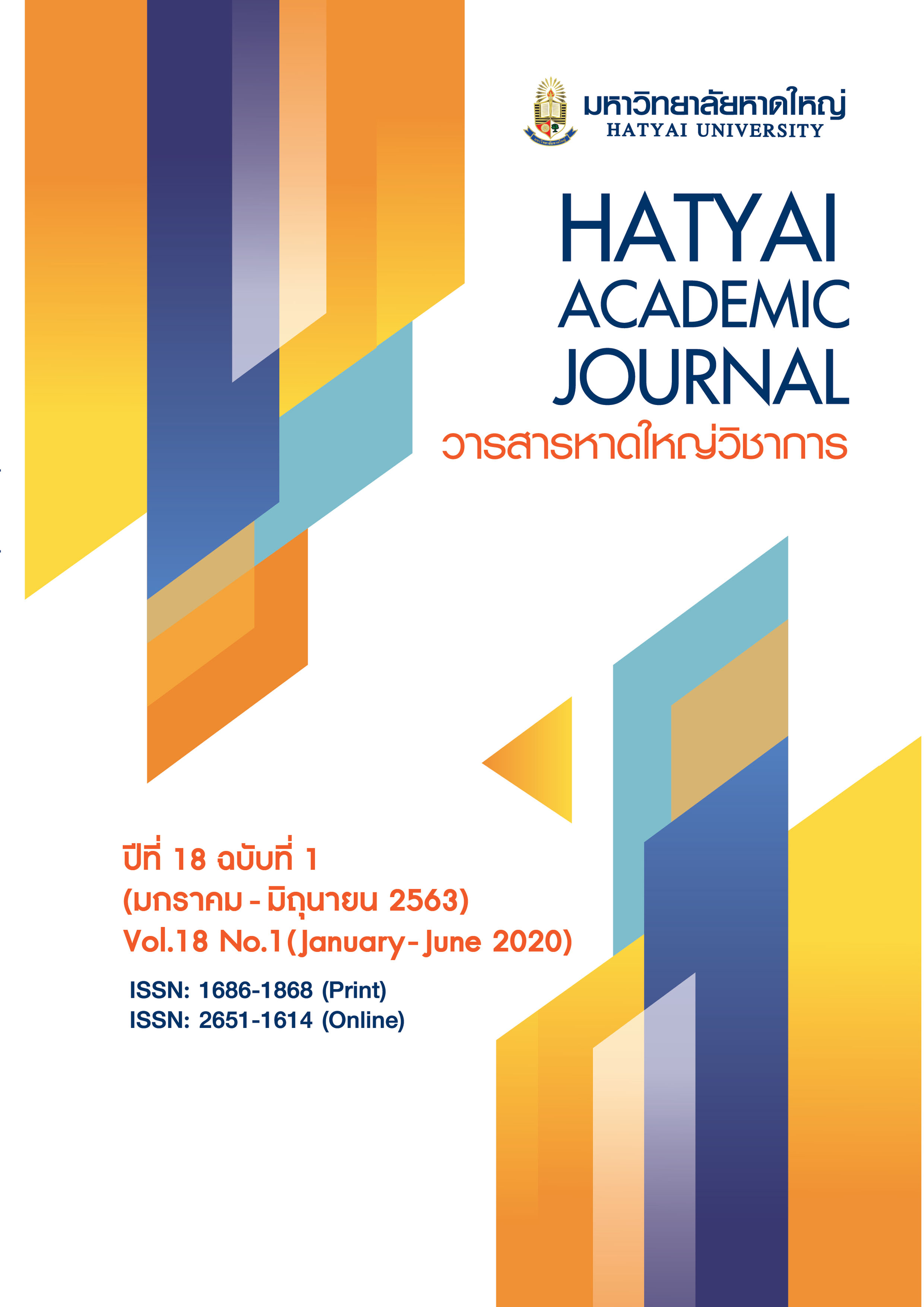การบริหารความขัดแย้งของพนักงานในองค์กรภาครัฐ
Main Article Content
บทคัดย่อ
บทความนี้เกี่ยวข้องกับการบริหารความขัดแย้งของพนักงานในองค์กรภาครัฐ เพื่อวิเคราะห์และสังเคราะห์สาเหตุและวิธีการจัดการความขัดแย้งที่เกิดขึ้นภายในองค์กรภาครัฐผ่านแนวคิดและทฤษฎีที่เกี่ยวข้องของการบริหารความขัดแย้ง ตามที่ได้มีการรวบรวม ทบทวนวรรณกรรมที่เกี่ยวข้องถือเป็นเครื่องมือในการวิเคราะห์เนื้อหาของกรณีความขัดแย้งและการจัดการความขัดแย้งที่เกิดขึ้น โดยสรุปแนวคิดและข้อเสนอแนะ ซึ่งนำเสนอเกี่ยวกับ ความหมายแนวคิด ทฤษฎีความขัดแย้ง สาเหตุของความขัดแย้ง ประเภทของความขัดแย้ง และการบริหารความขัดแย้งในองค์กรภาครัฐ
จากผลการศึกษาพบว่า ความขัดแย้งเป็นเหตุการณ์ที่ไม่สามารถหลีกเลี่ยงได้ โดยสาเหตุของความขัดแย้งภายในองค์กรภาครัฐมี 6 สาเหตุ คือ การมีเป้าหมายที่แตกต่างกัน การแข่งขันด้านทรัพยากร การสื่อสารบกพร่องและข้อมูลผิดพลาด ความคิดเห็นเกี่ยวกับมาตรฐานการปฏิบัติงานไม่ตรงกัน โครงสร้างองค์กรที่ไม่สอดคล้องกัน และความขัดแย้งจากค่านิยม ขณะที่การบริหารความขัดแย้งภายในองค์กร พบว่ามี 5 วิธี คือ การแข่งขันหรือการเอาชนะ การร่วมมือ การหลีกเลี่ยง การยอมรับ และการประนีประนอม นอกจากนี้ สิ่งสำคัญที่ทำให้การจัดการความขัดแย้งในองค์กรภาครัฐประสบความสำเร็จและเป็นไปอย่างสร้างสรรค์ขึ้นอยู่กับผู้นำองค์กรต้องเข้าใจธรรมชาติของความขัดแย้งและเปิดใจยอมรับฟังความคิดเห็นจากพนักงานภายในองค์กร เพื่อเป็นจุดเริ่มต้นของการแก้ไขปัญหาภายในองค์กรอย่างยั่งยืน
Article Details
ทุกบทความที่ได้รับการตีพิมพ์ ผ่านการประเมินจากผู้ทรงคุณวุฒิ (Peer Review) จำนวน 3 ท่าน จากหลากหลายสถาบัน โดยผู้ประเมินบทความไม่ทราบชื่อผู้เขียน และผู้เขียนไม่ทราบชื่อผู้ประเมิน (Double-blind Review)
ข้อความและบทความในวารสารหาดใหญ่วิชาการเป็นแนวคิดของผู้เขียน มิใช่ความคิดเห็นของคณะผู้จัดทำ และมิใช่ความรับผิดชอบของมหาวิทยาลัยหาดใหญ่ กองบรรณาธิการวารสารหาดใหญ่วิชาการ ไม่สงวนสิทธิ์การคัดลอกบทความเพื่อใช้ประโยชน์ทางวิชาการ แต่ให้อ้างอิงแสดงที่มาของบทความ
เอกสารอ้างอิง
Chan, K., Huang, X., & Ng, M. P. (2007). Managers’ conflict management styles and employee attitudinal outcomes: The mediating role of trust. Asia Pacific Journal of Management, 25(2), 277-295.
Inthapong, M., & Chochai, R. (2018). The guidelines for internal conflict administration of sub-district administrative organization in Phrankratai District, Kamphaeng Phet Province. The Golden Teak : Humanity and Social Science, 24(1), 1-10. [in Thai]
Khakhai, K. (2012). A study of the management compatency of a chief executive officer at a bureaucracy orgenization’s and a private enterprise. Bangkok: Suan Sunandha Rajabhat University. [in Thai]
Kitasin, S. (2010). Administrators of governmental organizations. Information Bulletin. Damrongrajanubhap Institute,7(9) 5-19. [in Thai]
Lee, K. (2009). An examination between the relationship of conflict management styles and employees’satisfaction with supervision. International Journal of Business and Management, 3(9), 11-25.
Monataraphadung, S. (2016). Creative conflict management. Valaya Alongkorn Review (Humanities and Social Science), 6(2), 193-208. [in Thai]
Montana, P., & Charnov, B. (2008). Management (4 th ed.). New York : Barron’s Educational Series.
Pachirapapapat, S., & Suntawan, T. (2013). Conflict administration guideline of academy performance in Phaisali District, NakhonSawan Province. Journal of Graduate Studies in Northern Rajabhat Universities, 3(5), 31-42. [in Thai]
Pantong, K. (2015). Politics and conflicts of local administration: A Case study of one municipality in the eastern region (Independent study). Rambhai Barni Rajabhat University, Chanthaburi. [in Thai]
Rahim, M. A. (2001). Managing conflict in organizations, (3 rd ed.). USA: Greenwood.
Reungkajorn, K. (2014). The Influence of organizational conflict management on overall operation: A case study of personnel of faculty of business administration at the Four Rafamangala Universities of Technology (Master’s thesis). Rafamangala Universities of Technology, Pathum Thani. [in Thai]
Robbins, P. S. (1983). Management: Concepts and Practices. New Jersey: Prentice Hall.
Robbins, S., & Judge, T. A. (2013). Organizational behavior (15 th ed.). New Jersey: Pearson Education.
Ruangrit, P, & Noirit, S. (2017). Developing the conflicts management model for school administrators of secondary school under the office of secondary educational service area 20. Journal of Education Mahasarakham University, 11(3), 98-107. [in Thai]
Thomas, K. (2006). Making conflict management a strategic advantage. Retrieved from https://www.psychometrics.com/wp-content/uploads/2015/05/onflictwhitepaper_psychometrics.pdf
Thomas, K. W., & Kilmann, R. H. (1987). Thomas – Kilmann conflict model interest. New York, NY: X/COM Incoporated.
Van Slyke, E. J. (1999). Listening to conflict: Finding constructive solution to workplace disputes. New York: AMACOM
Wangwinyo, W. (2009). Dialogue (2 nd ed.). Bangkok: Suan Nguen Meema. [in Thai]
Wongwanich, B., & Laohavichien, T. (2017). Conflict management and oranizational citizenship behavior. RMUTT Global Business and Economics Review, 12(2), 34-45. [in Thai]
Yanmethi, P., Nenyod, B., & Srivichai, S. (2018). Conflict management model in buddhism: From the analysis of the Tipitaka. Veridian E-Journal, Silpakorn University, 11(2), 2301-2326. [in Thai]

